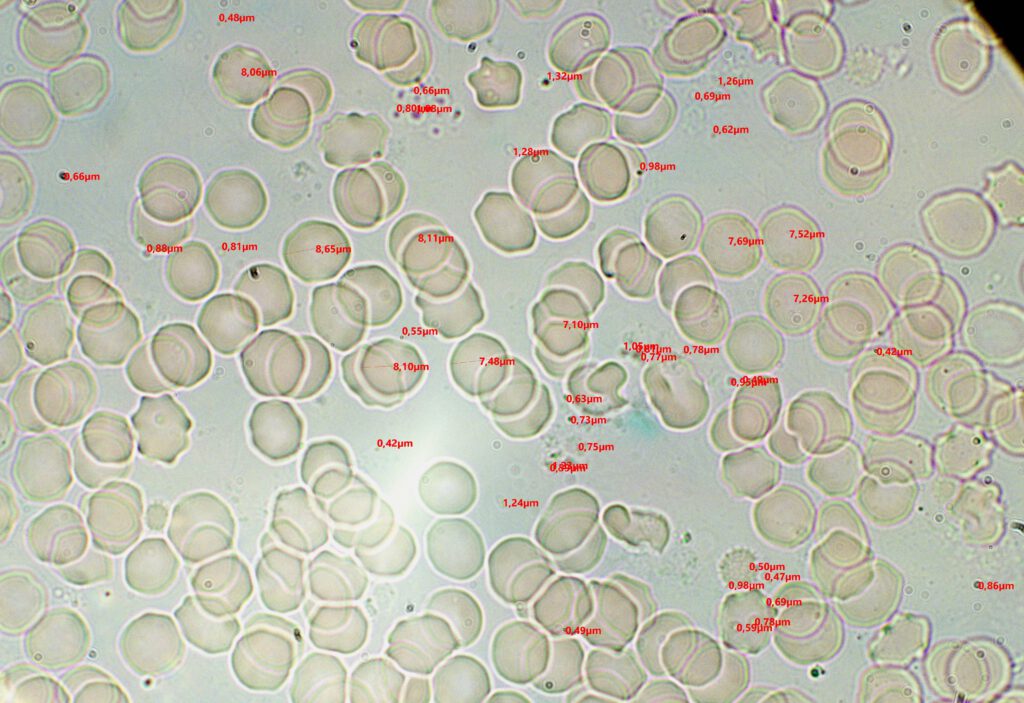1. Visual Assessment Criteria: During the visual assessment of blood on a slide, special attention is given to its fluidity and the presence of clots. These criteria allow us to evaluate the state of circulation and the blood coagulation system.
2. Conditions of Contact with Air and Gas Environments: The assessment considers the presence and duration of the blood’s contact with air and other gases. These conditions can influence the stability of the analysis, and the accuracy of results depends on proper control of the surrounding environment.
3. Blood Tests with Reagents: The use of reagents in blood tests implies chemical processes. It’s crucial to correctly conduct tests with reagents and meticulously evaluate their results, which is essential for accurate diagnosis.
4. Microscopic Blood Tests: Methods, including blood tests in a vacuum, after contact with air, or in gaseous environments, require microscopic evaluation. This allows for the detection of even the smallest changes and anomalies in the blood composition.
5. Influence of Blood Collection Methods: Understanding how blood collection methods can impact results is an important aspect. Different collection conditions can affect blood properties, influencing the reliability of results.
A thorough visual assessment of blood on a slide plays a pivotal role in diagnosis, ensuring the accuracy and reliability of analyses.

